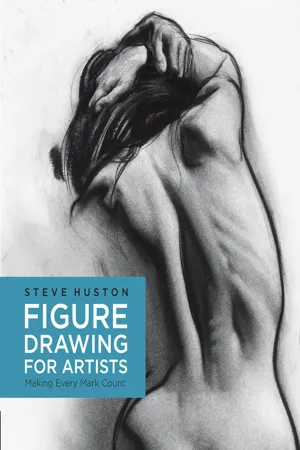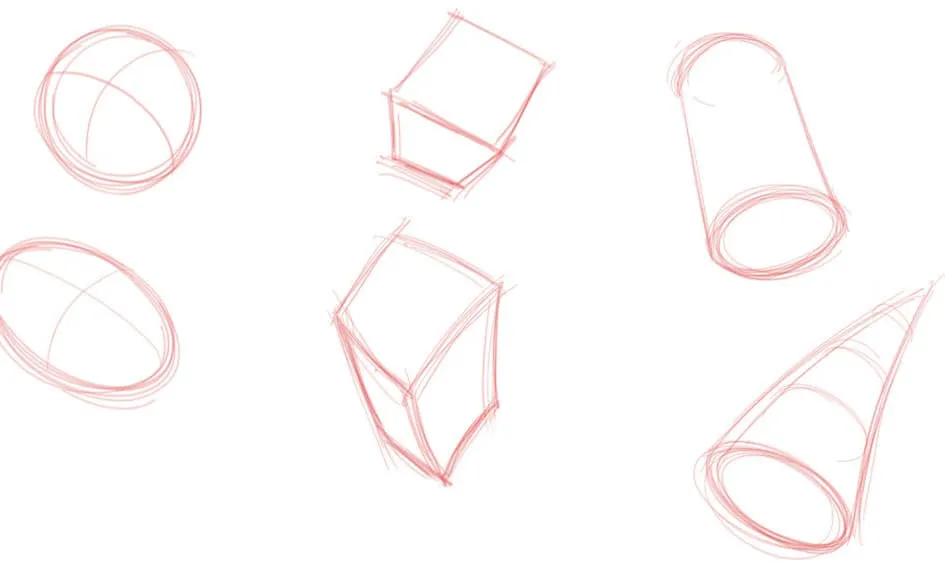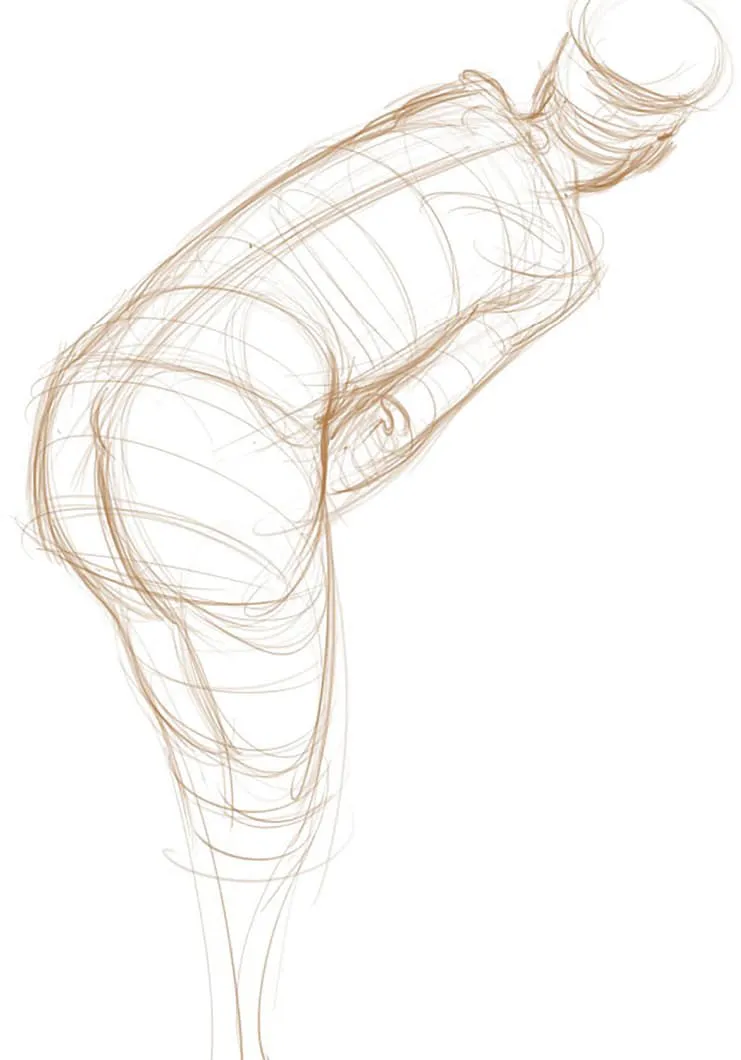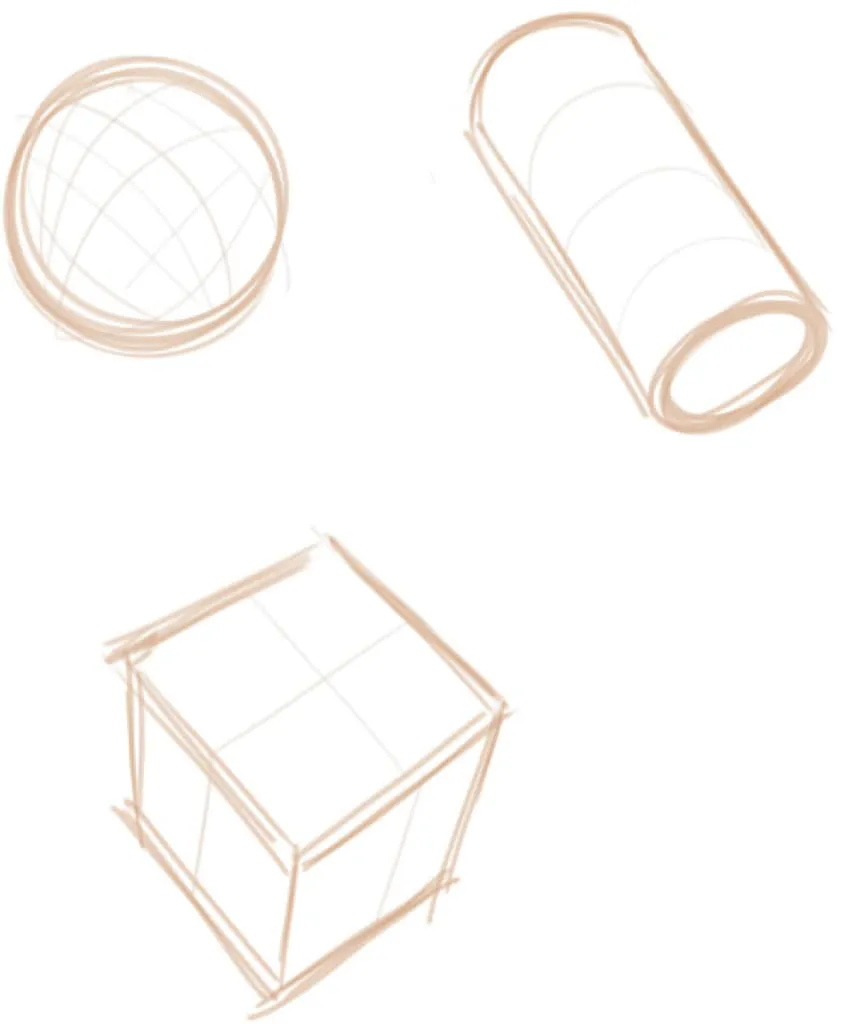CHAPTER 1
STRUCTURE
We have ideas we want to get down on the page, but we need materials to do that. And, we need some level of control over those materials. That’s what this chapter is about. We’ll start with a review of a few materials and then couple those with a few basic techniques. This book is not just about making marks. It’s about making the right marks for the right job. And, really, it’s not too difficult. We just need to make sure the materials don’t get in the way as we work through our big ideas.
Reclining Nude, c. 2000, by Steve Huston. Alphacolor and Conté chalks on Strathmore, Bristol paper.
Essential Ideas in Drawing
Structure and gesture are the two essential ideas of drawing. So, how can we define them?
To understand and use the idea of structure well, it’s best to think like a sculptor, meaning we build our drawing and painting (as in sculpture) through a series of constructed forms. Structure, then, is the distinct three-dimensional part(s) of any particular object. A tree would have a series of parts known as the roots, trunk, branches, leaves, and, possibly, fruit or nuts.
For this book, structure is any and all parts that make up the human body.
The Sages, c. 1996, by Steve Huston. Brush and ink on Strathmore paper, kid finish. To draw well from your imagination, you must be able to conceive of simple structures in space.
Gesture is a different idea. Gesture is the lifeline embedded inside any living form and mimicked in most organic ones. This gestural idea makes your art look natural. You don’t need to worry about gesture if you’re drawing something like a skyscraper. Everything there is stiff and mechanical. The pieces just stack or lock together on a straight axis. You do still have to worry about those measuring points and vanishing points that happen in perspective, though.
Sometimes the biggest things have the simplest structures. Even the mightiest skyscraper usually is just made of boxes.
If we’re drawing a thumbnail sketch of, for example, a river in a landscape; or an animal; or a breakdown of the light and shadow patterns on a nude; or a study for a fine-art painting; or an aerodynamic jet airplane; or a fantasy illustration; or a thousand other objects, we need to understand something about gesture—and the more we understand, the better. We’ll deepen our understanding in chapter 2.
Every fine figure painting starts with a well-constructed figure.
A landscape and a figure are not as different as you might think. Both contain nature’s beautiful organic design.
Where do you think engineers get their aerodynamic design ideas?
What Is Structure?
Let’s take a closer look at structure.
Structure is the parts and the pieces—the three-dimensional forms. In its simplest state, structure can be reduced to balls, boxes, and tubes. The goal is to translate the world into something manageable. Only when you translate it do you have an idea of its meaning. That’s structure. That’s the first of our two ideas.
We start with the simplest possible forms.
Structure in the human body is defined as the jointed parts. For example, from shoulder to elbow, that’s the upper arm, from shoulders to waist, that’s the rib cage, and so on. We’ll get a breakdown of the full figure in chapter 6.
This constructed way of working can be looser or tighter, full figured or small vignettes. It works for thumbnail sketches. It works for monumental mural commissions. Structure is going to become one of your two best friends. You just need a little time to get to know each other. Let me introduce you.
Volume, mass, three-dimensional construction, form, structure: they go by many names. The names don’t matter. The point is to get the idea onto the paper as simply and easily as possible, to stay in control, and to make it work for you on whatever level you need it to work. Think of it as the scaffold on which to hang your designs and rendering techniques.
In just a few lines, we want to find all the essential elements that make up a specific pose and even the type of model in that pose.
Figure Drawing, c. 2002, by Steve Huston. Alphacolor and Conté chalk on Strathmore, Bristol finish. It comes down to the fact that we won’t master this with any kind of consistency . . .
. . . unless we start with something like this.
Dimension
Here’s what three-dimensional structure means when working on flat paper: If the marks made on the paper move the viewer’s eye over the form, then she feels a solid three-dimensional structure. Ideally, every mark we make shows the viewer structure (or, as we’ll see in the next chapter, gesture). The good news is this is a lot easier than it sounds.
Turkey fingers don’t work so well, do they? They lay flat because our eye goes around the finger shapes like a shadow on the wall instead of over them, as that simple cylinder drawing demonstrates.
Constructed forms automatically feel three dimensional when done well because the lines move over the form. Another way to think of it is that every mark we make, whether carefully rendered or loosely sketched, should act as a visual arrow. The more conscious we are of where the arrows point, the more successful our drawings will be in terms of structure (and eventually gesture).
Structure = movement over the form.
Every line we make is a visual arrow.
The Three Basic Forms
Let’s look more carefully at our three constructed forms:
1. The sphere
2. The tube
3. The box
Variations of these foundational structures replace and simplify the tricky anatomy of the human body, making what’s very complex simpler.
Try it. If you need to, reread the previous section to review the principles of mark making.
With practice, we can draw anything with this method. Using ever-greater variations of our three fundamental forms, we’ll become ever more comfortable in the seeing and translating process called “drawing.”
If you draw a tube like I do, you start with the length, add the width, and then build on ...














